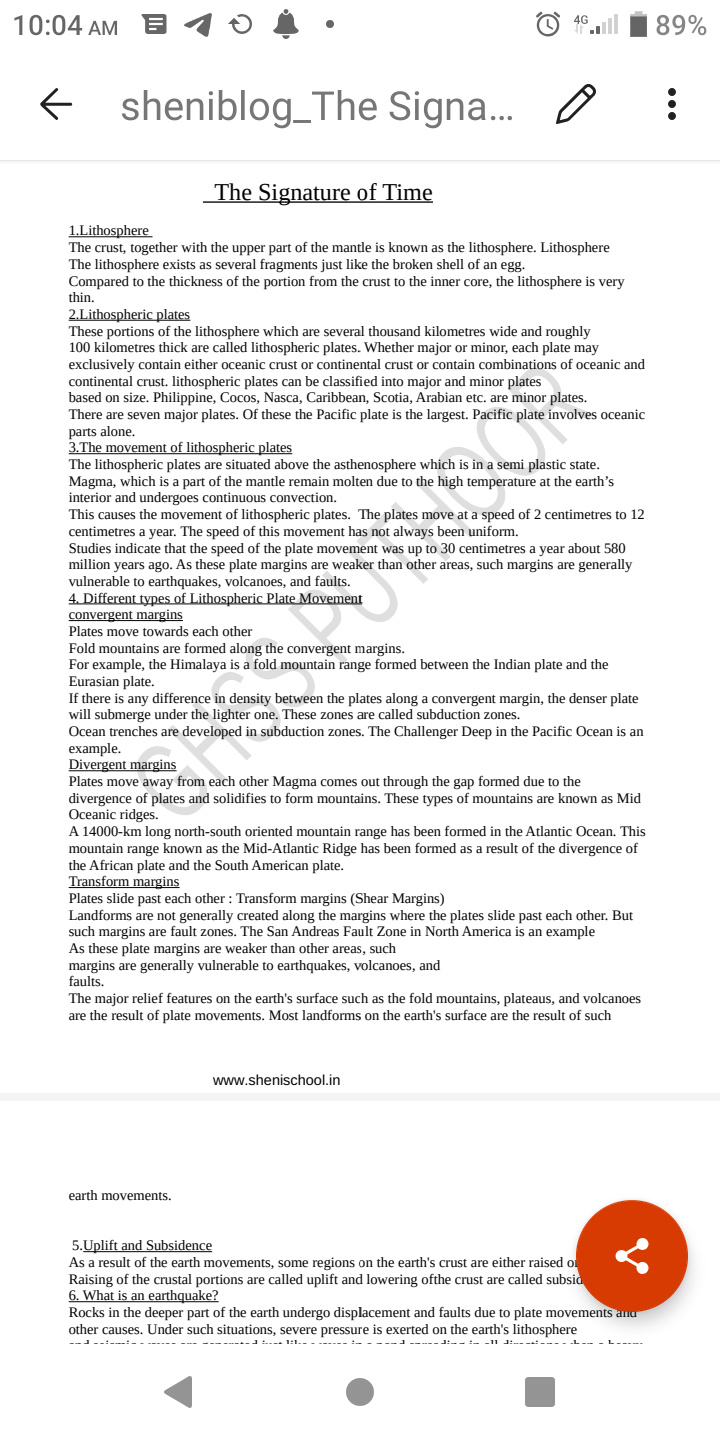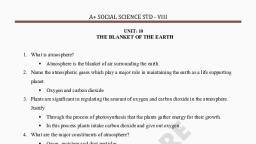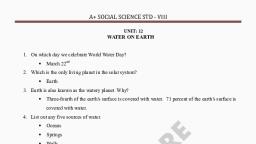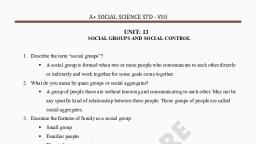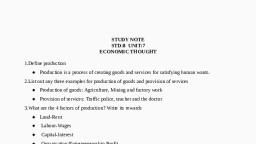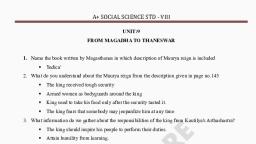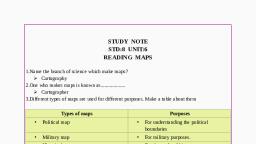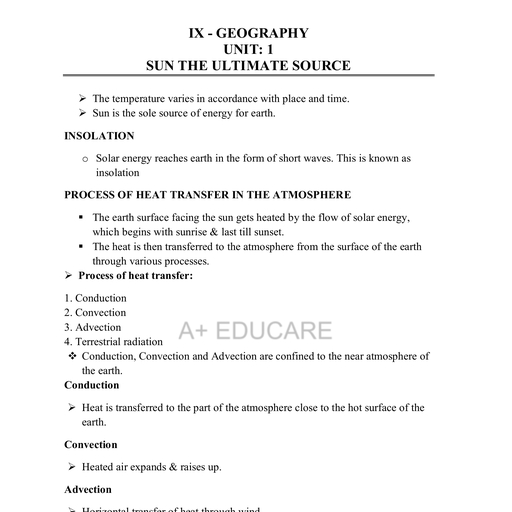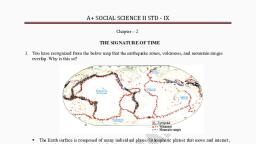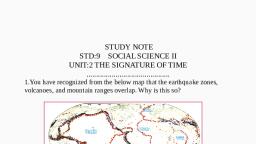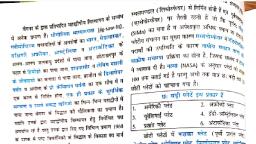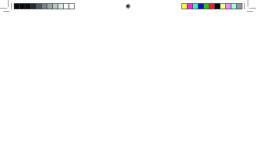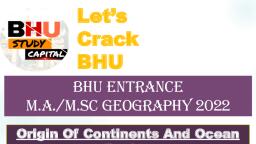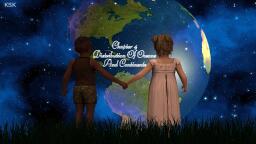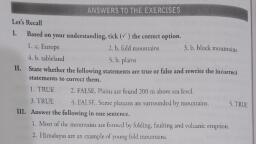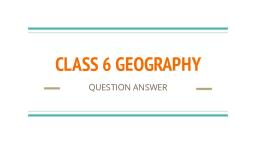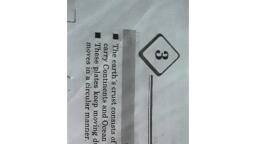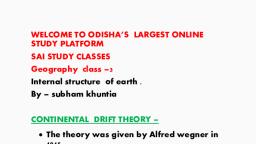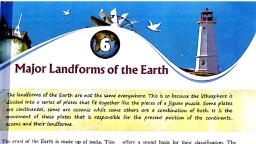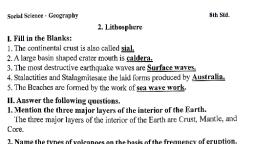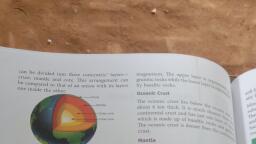Page 1 :
10:04am BQO, , , , ° © ull M89%, , 0, , €__ sheniblog_The Signa, , , , The Sign f Tim, , LLithosphere, The crust, together with the upper part of the mantle is known as the lithosphere. Lithosphere, ‘The lithosphere exists as several fragments just like the broken shell of an egg., , Compared to the thickness of the portion from the crust to the inner core, the lithosphere is very, , thin,, 2.Lithospheric plates, , ‘These portions of the lithosphere which are several thousand kilometres wide and roughly, 100 Kilometres thick are called lithospheric plates. Whether major or minor, each plate may, exclusively contain either oceanic crust or continental crust or contain combinations of oceanic and, continental crust. lithospheric plates can be classified into major and minor plates, based on size. Philippine, Cocos, Nasca, Caribbean, Scotia, Arabian etc. are minor plates., ‘There are seven major plates. Of these the Pacific plate is the largest. Pacific plate involves oceanic, parts alone., 3.The movement of lithospheric plates, The lithospheric plates are situated above the asthenosphere which is ina semi plastic state., ‘Magma, which is a part of the mantle remain molten due to the high temperature at the earth’s, interior and undergoes continuous convection., This causes the movement of lithospheric plates. ‘The plates move at a speed of 2 centimetres to 12, centimetres a year. The speed of this movement has not always been uniform., ‘Studies indicate that the speed of the plate movement was up to 30 centimetres a year about 580, million years ago. As these plate margins are weaker than other areas, such margins are generally, vulnerable to earthquakes, volcanoes, and faults., , Di li ic Plate Mi, convergent margins, Plates move towards each other, Fold mountains are formed along the convergent margins., For example, the Himalaya is a fold mountain range formed between the Indian plate and the, Eurasian plate., If there is any difference in density between the plates along a convergent margin, the denser plate, will submerge under the lighter one, These zones are called subduction zones., Ocean trenches are developed in subduction zones. The Challenger Deep in the Pacific Ocean is an, , example., Divergent margins, , Plates move away from each other Magma comes out through the gap formed due to the, divergence of plates and solidifies to form mountains. These types of mountains are known as Mid, Oceanic ridges., , A 14000-km long north-south oriented mountain range has been formed in the Atlantic Ocean. This, ‘mountain range known as the Mid-Atlantic Ridge has been formed as a result of the divergence of, the African plate and the South American plate., , ‘Transform margins, , Plates slide past each other : Transform margins (Shear Margins), , Landforms are not generally created along the margins where the plates slide past each other. But, such margins are fault zones. The San Andreas Fault Zone in North America is an example, , As these plate margins are weaker than other areas, such, , ‘margins are generally vulnerable to earthquakes, volcanoes, and, , faults., , ‘The major relief features on the earth's surface such as the fold mountains, plateaus, and volcanoes, are the result of plate movements. Most landforms on the earth's surface are the result of such, , www.shenischool.in, , earth movements., , 5.Uplift and Subsidence, As a result of the earth movements, some regions on the earth's crust are either raised of, Raising of the crustal portions are called uplift and lowering ofthe crust are called subsi, 6. What is an earthquake?, , Rocks in the deeper part of the earth undergo displacement and faults due to plate movements, other causes. Under such situations, severe pressure is exerted on the earth's lithosphere, , , , < @ a
